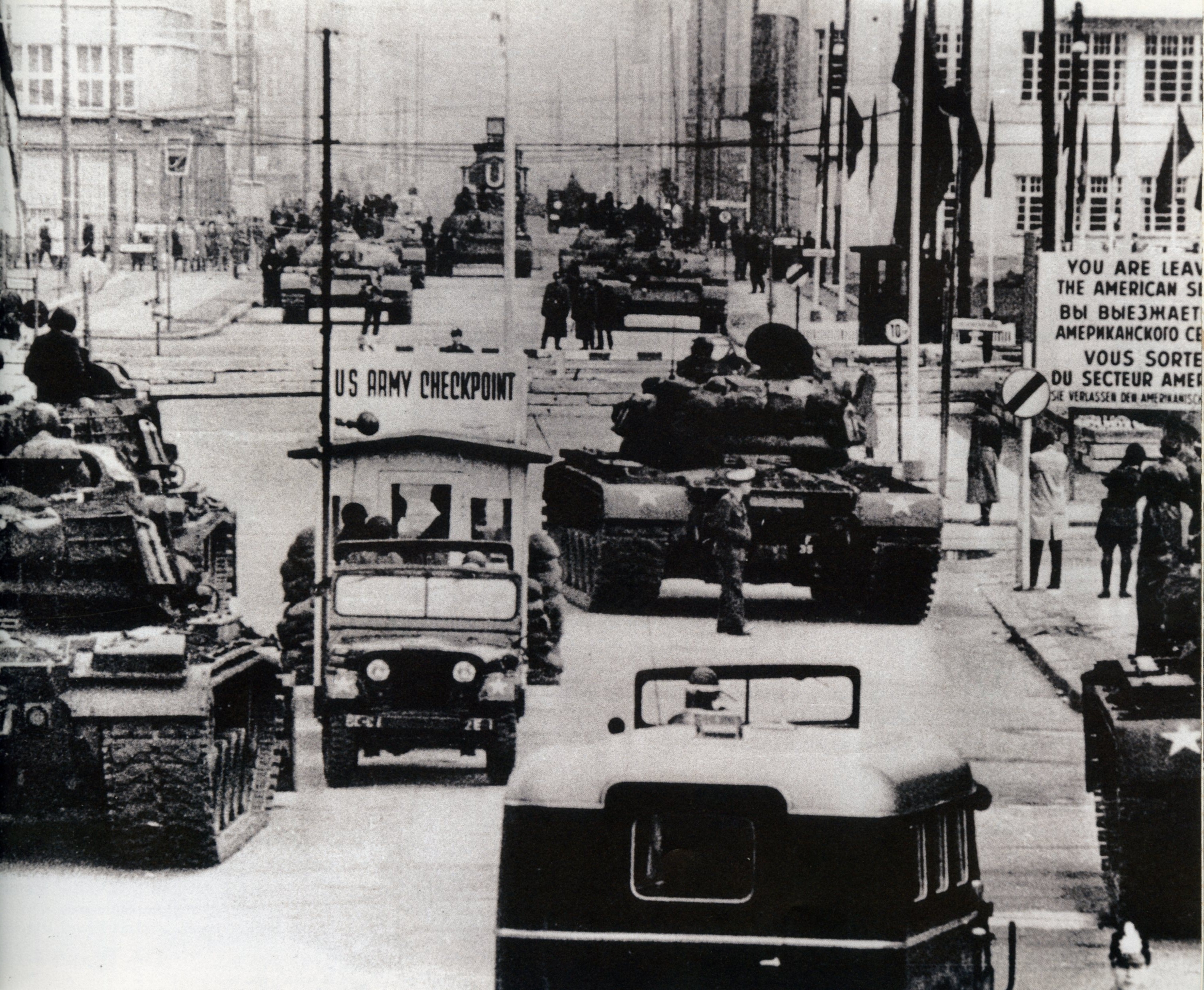
If strategy is what you do when you run out of money, our post Cold War primacy has largely reduced strategy to the dollar sign on the Pentagon budget
Thank you to everyone who submitted. We received a large number of strong responses – in fact, we received so many that we decided to spread out the releases over two weeks. Here is the first batch. Meanwhile, the next Whiteboard is coming soon. Stay tuned!
Based on the judgment of the editorial board, the following (in no particular order) were among the best responses to the following question:
Some analysts claim that the United States is tactically proficient, but strategically deficient. How sound is this critique?
1. Glenn Harned, Colonel (Retired), U.S. Army, and Independent Defense Consultant
The United States has the finest tactical formations in the world. We have not lost a major battle since Korea in 1950. However, we have not won a war since the end of World War II in 1955 (not a typo). The U.S. military suffers from “Ludendorff Syndrome,” after the German General who lost World War I. Like Ludendorff, we believe that tactically and operationally proficient formations can mitigate poor strategic plans, despite all the historical evidence that suggests that the opposite is true. We fight our nation’s battles, not its wars. We are content to defeat our enemy’s armed forces, abdicating our responsibility to consolidate military gains, stabilize liberated or occupied territory, and establish the necessary conditions for a favorable strategic outcome and a transition of area responsibility to a locally legitimate and competent civil authority.
Consider the likely strategic outcome of World War II if we had declared military victory in 1945 and brought our troops home. No two-year consolidation operation to defeat the Nazi resistance movement. No military occupation to stabilize the U.S. sector. No successful transition to civil authority and normal diplomatic relations in 1955.
Battles end, but without a coherent military strategy for enforcing a “better peace,” wars can persist in a different form, robbing victory of much of its meaning. The fall of Nazi Germany in 1945, the surrender of Japan later that year, the 2003 fall of Baghdad, the British defeat at Yorktown, the Confederate surrender at Appomattox, the armistice that concluded World War I, and the armistice that halted the Korean War all ended major combat operations, but with varied long-term political consequences. A major difference-maker was a strong, coherent, and enduring military strategy.
2. Mr. Adam Wasserman, Former Faculty Member, Air War College
The question implies an inverse relation between tactical proficiency, and strategic deficiency. There is truth here – we have long relied on massive production capacity and superior technology to best potential adversaries. This holds even for low-intensity conflicts: a Special Forces team in Kandahar is the pointy end of a long spear that includes sophisticated training, specialized weapons, real-time intelligence, close-air support, and mind-boggling logistics. This can make it harder to think strategically. When you’re so good at specific military tasks, why bother with the rest of the DIME?* Why take a long view when you can put cross-hairs on targets right now? Civilians are particularly guilty of expecting unrealistic, quick results.
If strategy is what you do when you run out of money, our post Cold War primacy has largely reduced strategy to the dollar sign on the Pentagon budget. Trillions down the drain in Iraq and Afghanistan? Speed bumps that America barely notices any more. We can do really stupid stuff and still be the world’s top dog.
But we have been top dog for many decades. We must be doing something right. The broad reason is the solid strategic architecture put in place after World War II to meet undisputed existential threats. We integrated our USG decision-making, built a global military presence, created new alliances and multilateral organizations, invented a robust “soft-power” capacity, and more. Critically, the American people and political leaders from both parties bought into these basics.
Whether domestic support will continue is our most pressing strategic question. Growing threats from China and Russia make this architecture, appropriately modernized, even more valuable. But it cannot endure protracted abuse from American leaders, and neglect from American citizens, who take success for granted and have forgotten how we got here.
*DIME refers to four categories of power: Diplomatic, Informational, Military, and Economic
3. Paul Wyatt, Captain, U.S. Army Corps of Engineers
The United States Military is very tactically proficient, but not as strategically proficient.
A unit that is proficient in tactics wins engagements or battles. The best test of tactical proficiency is how a unit performs in battle against a similarly equipped adversary. A tactically proficient force will lose relatively little combat power while inflicting significant losses on the enemy during engagements or battles. By this standard, the U.S. military (though in some respects untested) appears very tactically proficient. While tactical victories may be important to the forces engaged, they may be only loosely related to strategic success. Indeed, there is a long line of prominent military leaders (Hannibal, Napoleon, Lee) who achieved notable battlefield success but failed to translate those gains into strategic victory.
Strategic proficiency is something different; it is the ability to achieve political objectives. This requires an accurate understanding of key present and future political factors, and shaping those factors to achieve the desired political objective. Each strategic problem is unique, and the strategy required may vary greatly. Yet for the military, strategic success has one consistent requirement: combat power must be generated and sustained. Tactical victories can be used to create time and space for strategic decisions, and for generating more force. Yet as long as a military can regenerate combat power, there is no essential correlation between tactical victory and strategic success.
The United States achieved stunning tactical and operational victories in Afghanistan and Iraq in the initial phase of the war. This created time and space to implement actions aimed at strategic victory; however, the temporary defeat of an enemy’s military power was not the Center of Gravity. In Afghanistan, the Taliban remains strategically competitive because it continues to generate combat power. In the meantime, American will to commit combat power to that conflict continues to wane.
The pathologies of strategy making in a fragmented and often divided government are many
4. Darrell Driver, Colonel, U.S. Army, Instructor at the U.S. Army War College
The German economist Werner Sombart popularized the phrase “American exceptionalism” as an explanation for why the U.S. was slow to adopt popular social welfare programs. Later generations of political scientists, however, would point out that this difference between the U.S. and the rest of the western world had less to do with Americans than their Constitutional system. As Sven Steinmo and Jon Watts put it, it’s the institutions, stupid. As the rest of the developed world moved toward comprehensive healthcare and other forms of social insurance, the fragmented U.S. government of checks and balances, separated powers, and blended responsibilities erected extraordinarily high policy-making hurdles that were only overcome by democratic majorities in fits and starts. The result was a programmatic patchwork unlike anything that might have been crafted in a single founding act. The same might be said of U.S. strategy. While U.S. tactical proficiency soars with generous defense investment, coherent and effective strategy in such a system is not so easily purchased.
The pathologies of strategy making in a fragmented and often divided government are many. Strategy making and intelligence organs in the executive branch each have separate oversight committees in Congress. Homeland Security alone has over 100 Congressional oversight bodies claiming some degree of jurisdiction. Internal to the executive branch, reformers have long called for greater synthesis of interagency effort, even as successive National Security Advisors have struggled to orchestrate competing power centers. It is remarkable that the U.S. has had effective strategy at all.
Yet, the “muddling through” approach necessitated by this system has proven effective in the past. When there has been broad consensus among leaders in successive administrations and different parties, the path-dependent system yields remarkable strategic consistency. In the absence of underlying consensus, we are left with a structure prone to schizophrenia.
5. Michael Schellhammer, Army Civilian, U.S. Army War College Class of 2017
The criticism that the U.S. military excels at tactics but struggles with strategy is not new. Yet it is only partially correct, because it begins with the assumption that the U.S. military is tactically proficient. After years of combat in Afghanistan and Iraq, the U.S. is certainly proficient in counterinsurgency operations. But America’s next conflict may be against a peer or near-peer state and across all five domains: land, air, sea, space and cyberspace.
To broadly declare the U.S. military “tactically proficient” across these domains and in mid- to high-intensity combat suggests overconfidence. The U.S. faced a similar situation when it entered the World War I, with an Army skilled in tactics suited for the American West but poorly prepared for combat in Europe. The current U.S. posture may be alarmingly close to what it faced in 1917. We are tactically proficient for the last war.
The U.S. is strategically deficient because it does not follow its doctrine for national strategic planning. The military operates as one part of the DIME elements of national power. The correct doctrinal approach is to follow an overarching grand strategy with national objectives (or ends), with ways and means to achieve them, all articulated in the National Security Strategy (NSS). National Military Strategies (NMS) should specify how the military will support the NSS. In the latter half of the 20th century, the grand strategy of containing the Soviet Union focused national power towards a single goal. The U.S. has not developed another grand strategy with equal clarity. Without a clear grand strategy, all elements of national power, including the military, will lack direction and coordination. Until the U.S. follows its own doctrine for a grand strategy that guides all the elements of national power, it will remain strategically deficient.
The views expressed in this Whiteboard Exercise are those of the contributors and do not necessarily reflect those of the U.S. Army War College, U.S. Army, or Department of Defense.
Photo: U. S. Army tanks face off against Soviet armor at Checkpoint Charlie, Berlin, October 1961.
Photo Credit: U.S. Army Military History Institute, public domain
Other Releases in the Whiteboard series:
- THE ADMINISTRATION’S TOP FOREIGN POLICY PRIORITY (A WHITEBOARD)
- AFTER 2020, WHAT’S NEXT? (A WHITEBOARD)
- IMAGINING OVERMATCH: CRITICAL DOMAINS IN THE NEXT WAR (A WHITEBOARD)
- THAT ONE MOST IMPORTANT THING: (A WHITEBOARD)
- SHALL WE PLAY A GAME?
(WARGAMING ROOM) - WAR(GAMING) WHAT IS IT GOOD FOR? (A WHITEBOARD)
- LEADERSHIP ROLE MODELS IN FICTION REVISITED: (A WHITEBOARD)
- WHAT GOOD IS GRAND STRATEGY? (A WHITEBOARD)
- THE UNITED NATIONS’ GREATEST ACCOMPLISHMENT: (A WHITEBOARD)
- LEADERSHIP ROLE MODELS IN FICTION: (A WHITEBOARD)




